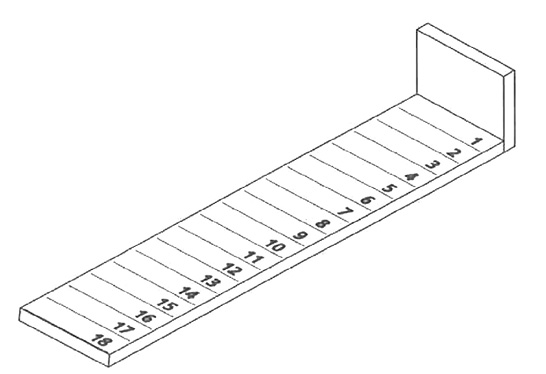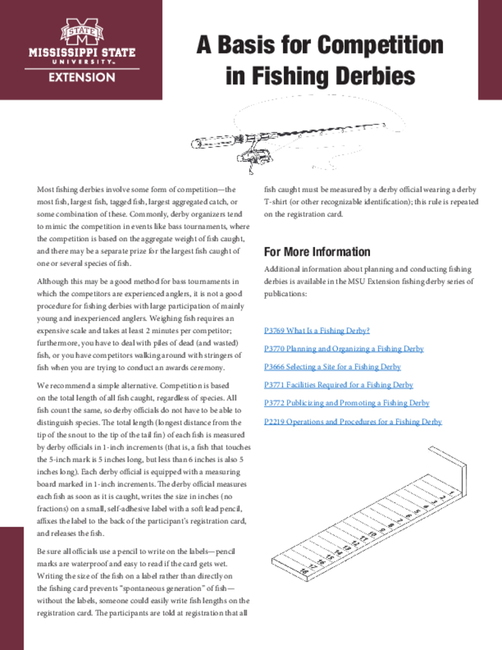A Basis for Competition in Fishing Derbies
Most fishing derbies involve some form of competition—the most fish, largest fish, tagged fish, largest aggregated catch, or some combination of these. Commonly, derby organizers tend to mimic the competition in events like bass tournaments, where the competition is based on the aggregate weight of fish caught, and there may be a separate prize for the largest fish caught of one or several species of fish.
Although this may be a good method for bass tournaments in which the competitors are experienced anglers, it is not a good procedure for fishing derbies with large participation of mainly young and inexperienced anglers. Weighing fish requires an expensive scale and takes at least 2 minutes per competitor; furthermore, you have to deal with piles of dead (and wasted) fish, or you have competitors walking around with stringers of fish when you are trying to conduct an awards ceremony.
We recommend a simple alternative. Competition is based on the total length of all fish caught, regardless of species. All fish count the same, so derby officials do not have to be able to distinguish species. The total length (longest distance from the tip of the snout to the tip of the tail fin) of each fish is measured by derby officials in 1-inch increments (that is, a fish that touches the 5-inch mark is 5 inches long, but less than 6 inches is also 5 inches long). Each derby official is equipped with a measuring board marked in 1-inch increments. The derby official measures each fish as soon as it is caught, writes the size in inches (no fractions) on a small, self-adhesive label with a soft lead pencil, affixes the label to the back of the participant’s registration card, and releases the fish.
Be sure all officials use a pencil to write on the labels—pencil marks are waterproof and easy to read if the card gets wet. Writing the size of the fish on a label rather than directly on the fishing card prevents “spontaneous generation” of fish—without the labels, someone could easily write fish lengths on the registration card. The participants are told at registration that all fish caught must be measured by a derby official wearing a derby T-shirt (or other recognizable identification); this rule is repeated on the registration card.

For More Information
Additional information about planning and conducting fishing derbies is available in the MSU Extension fishing derby series of publications:
P3769 What Is a Fishing Derby?
P3770 Planning and Organizing a Fishing Derby
P3666 Selecting a Site for a Fishing Derby
P3771 Facilities Required for a Fishing Derby
P3772 Publicizing and Promoting a Fishing Derby
P2219 Operations and Procedures for a Fishing Derby
Publication 3773 (POD-09-21)
Distributed by Wes Neal, PhD, Extension/Research Professor, Wildlife, Fisheries, and Aquaculture. Written by Harold L. Schramm Jr., PhD, Mississippi Cooperative Fish and Wildlife Research Unit; Stephen A. Flickinger, PhD, Professor Emeritus, Fishery and Wildlife Biology, Colorado State University; and Martin W. Brunson, PhD, Extension Professor (retired), Wildlife, Fisheries, and Aquaculture.
